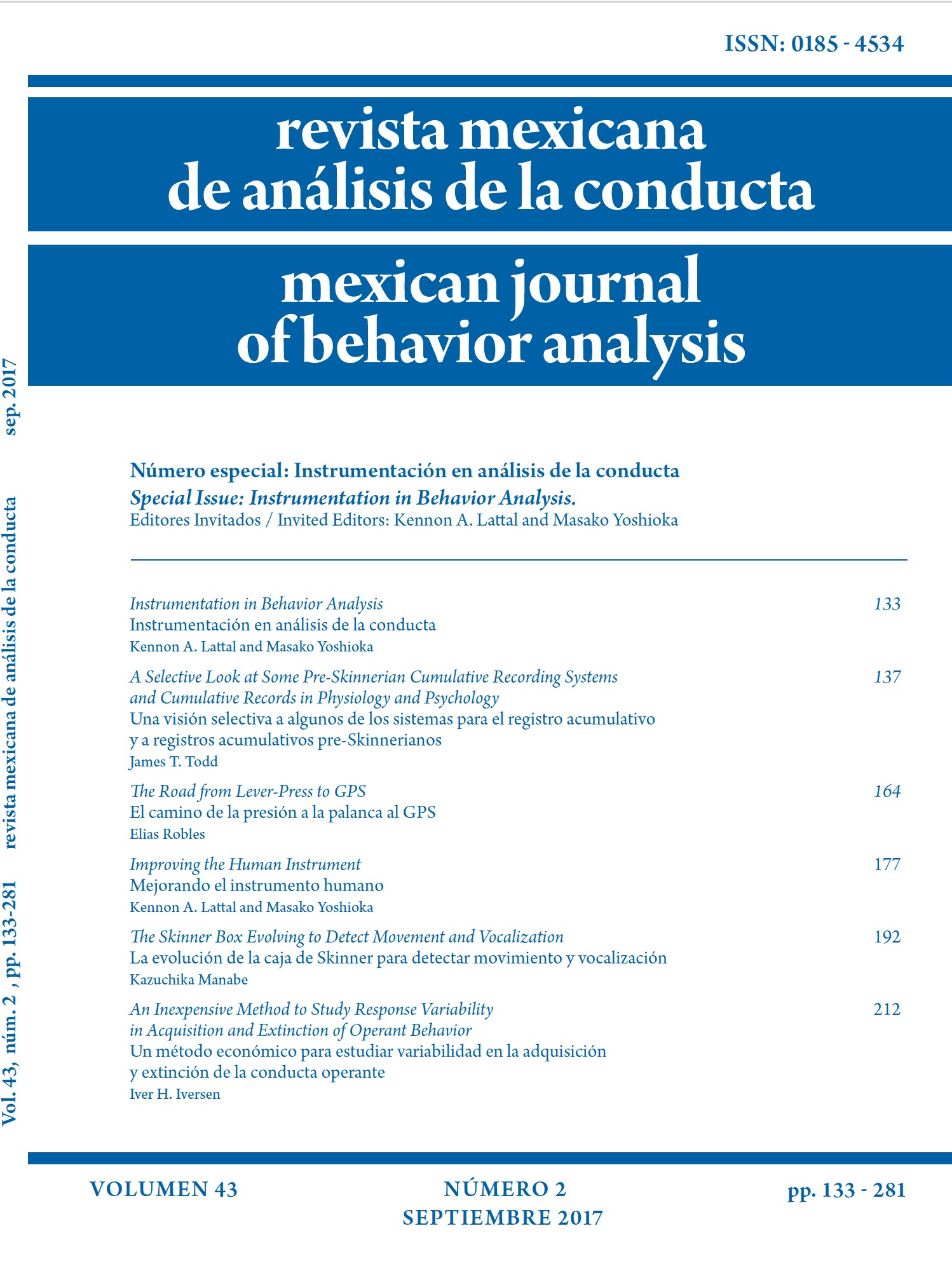New Technologies Applied to Operant Research: Inexpensive Photocells for the Arduino-Visual Basic Interface
Main Article Content
Abstract
In recent years, technological advances in electronics have been applied for designing flexible and inexpensive interfaces for recording and controlling events in operant research. One example, tested for accuracy and reliability, uses the popular Arduino microcontroller boards in combination with Visual Basic Express Edition programming. This paper describes one of the applications of the Arduino-Visual Basic interface to record movement using photocells. Each photocell uses a phototransistor, and an infrared LED, and allows recording the interruption of the light emitted by the infrared LED. Such interruptions are detected as responses, and are used to schedule experimental events in Visual Basic programs. These photocells can be used in diverse experimental settings under varied conditions of illumination and distances without changing the hardware setup. Programs for calibrating and using the photocells can be freely downloaded and modified by the users. This setup can also be used for recording responses using other sensors like force and flexion sensors.
